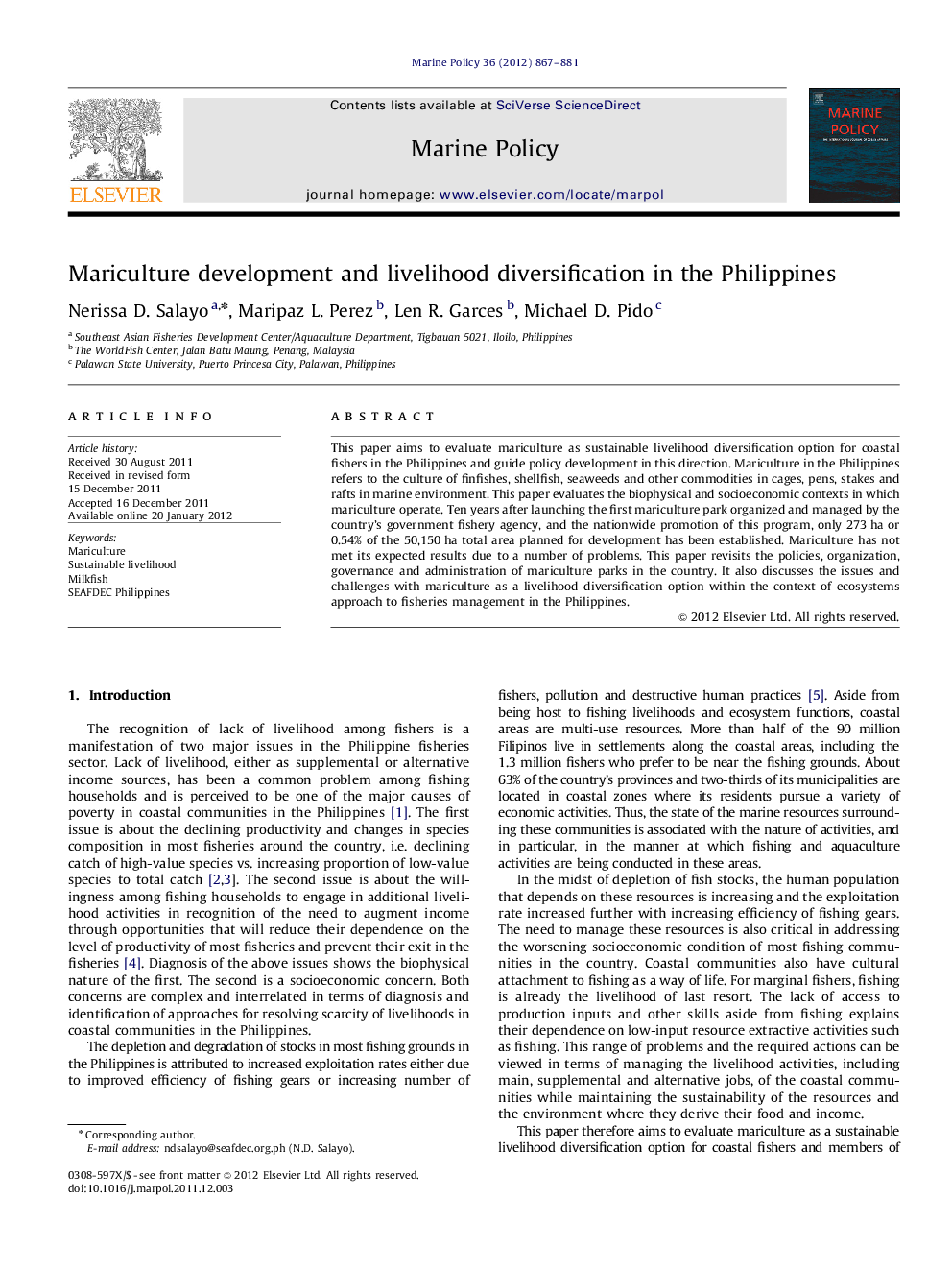| کد مقاله | کد نشریه | سال انتشار | مقاله انگلیسی | نسخه تمام متن |
|---|---|---|---|---|
| 1060833 | 947643 | 2012 | 15 صفحه PDF | دانلود رایگان |

This paper aims to evaluate mariculture as sustainable livelihood diversification option for coastal fishers in the Philippines and guide policy development in this direction. Mariculture in the Philippines refers to the culture of finfishes, shellfish, seaweeds and other commodities in cages, pens, stakes and rafts in marine environment. This paper evaluates the biophysical and socioeconomic contexts in which mariculture operate. Ten years after launching the first mariculture park organized and managed by the country's government fishery agency, and the nationwide promotion of this program, only 273 ha or 0.54% of the 50,150 ha total area planned for development has been established. Mariculture has not met its expected results due to a number of problems. This paper revisits the policies, organization, governance and administration of mariculture parks in the country. It also discusses the issues and challenges with mariculture as a livelihood diversification option within the context of ecosystems approach to fisheries management in the Philippines.
► Mariculture creates social gains through livelihoods and fish supply at low prices.
► Government's mariculture program developed 0.54% of total planned area in 10 years.
► Slow mariculture development may contribute to further fishing pressure.
► Ecosystems approach to fisheries management may apply in regulated mariculture systems.
Journal: Marine Policy - Volume 36, Issue 4, July 2012, Pages 867–881